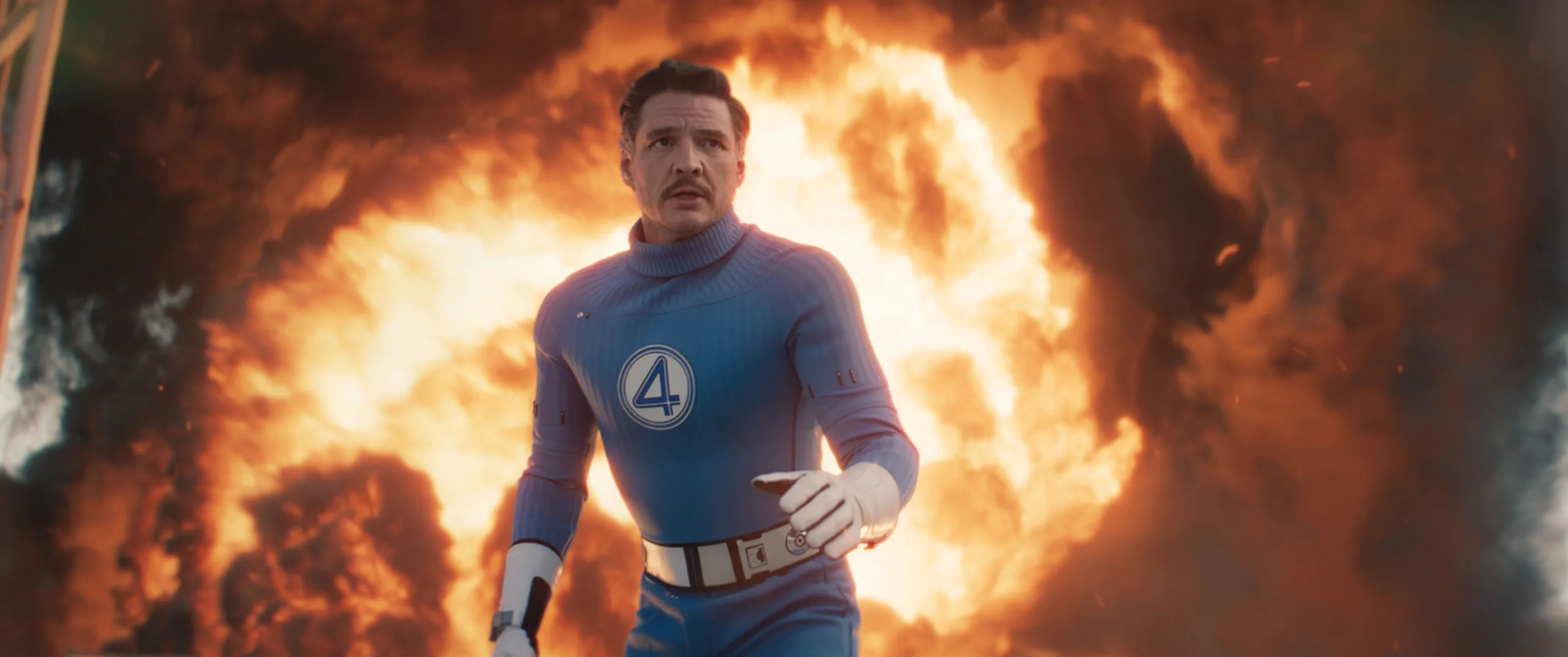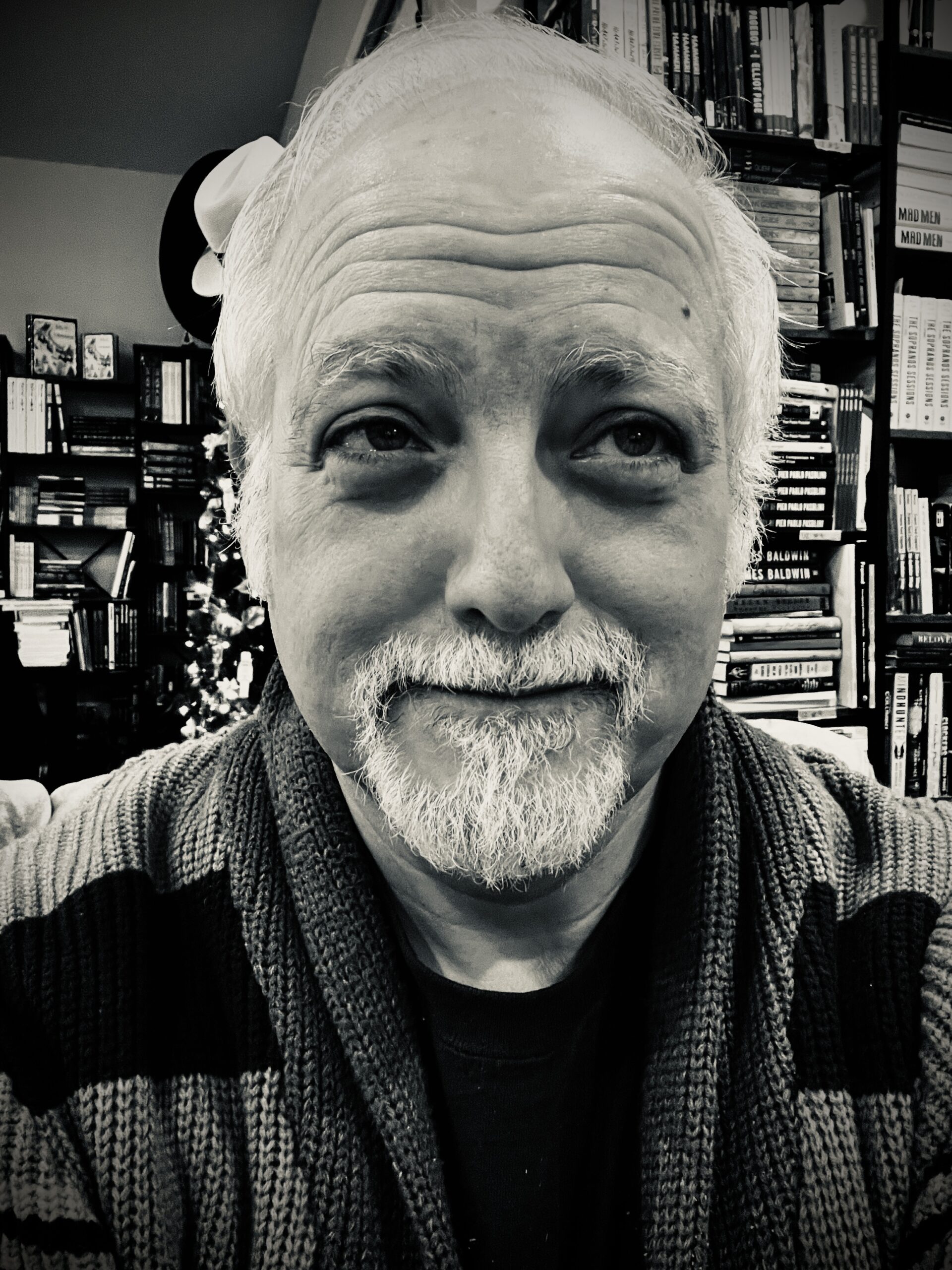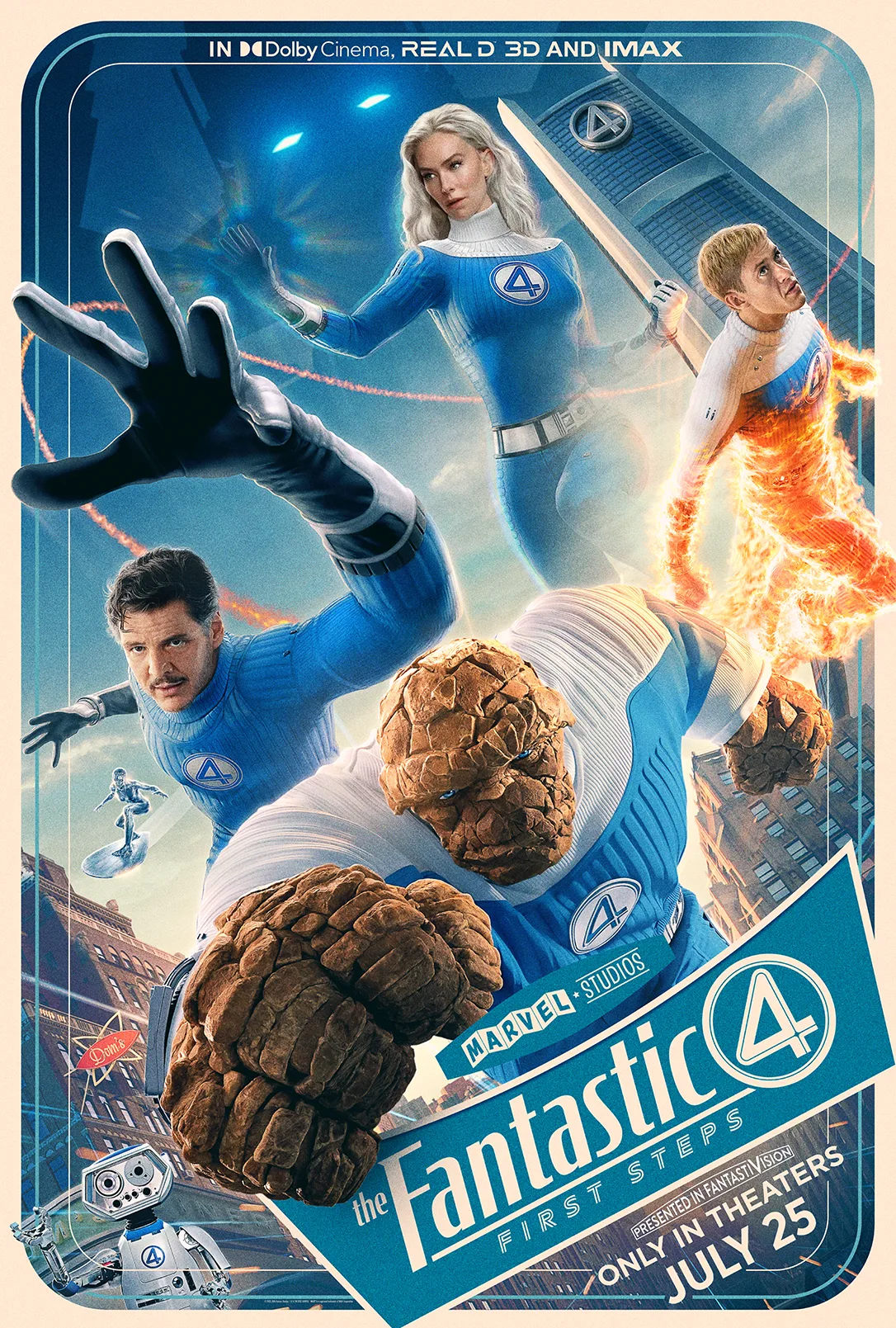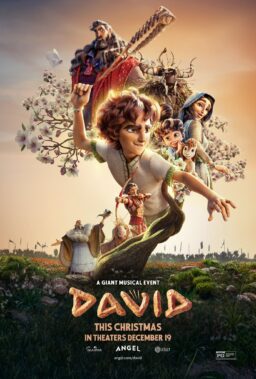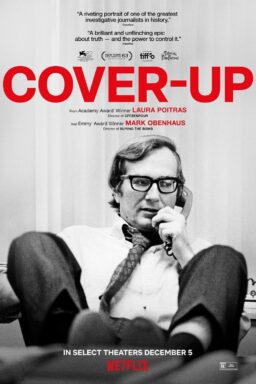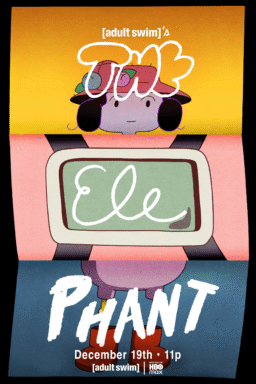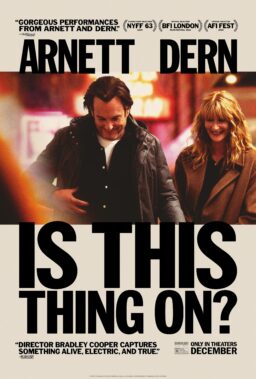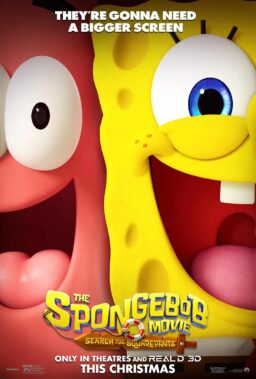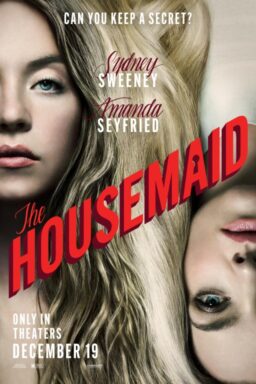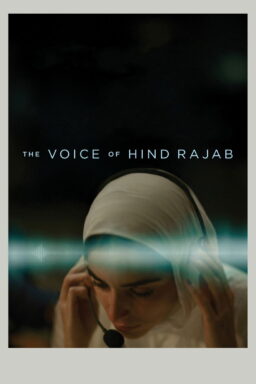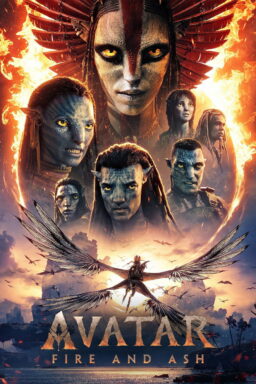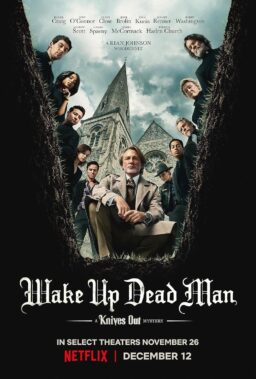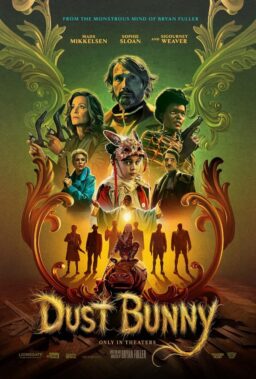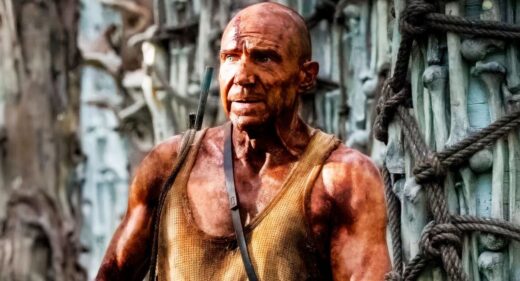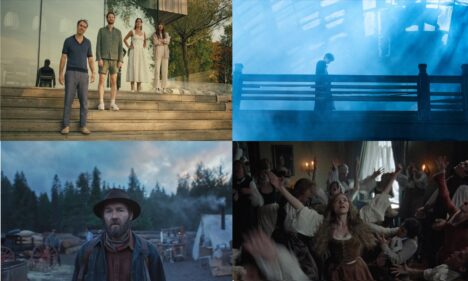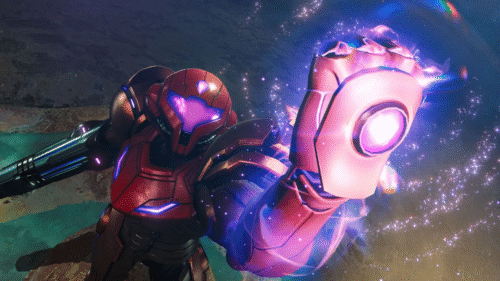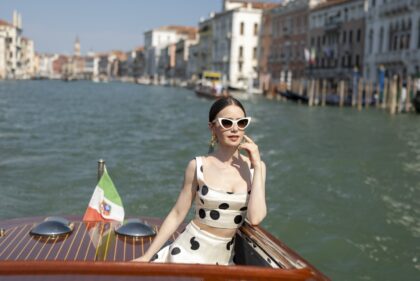“The Fantastic Four: First Steps” is a briskly paced superhero adventure that, like the current “Superman,” tosses viewers into the deep end of the pool from frame one and expects them to swim. The filmmakers provide water wings in the form of a little film-within-a-film, explaining how four intrepid heroes—married scientists Reed Richards, aka the stretchable Mr. Fantastic (Pedro Pascal) and Sue Storm, aka The Invisible Girl (Vanessa Kirby); Sue’s kid brother Johnny Storm, aka The Human Torch (Joseph Quinn); and Reed’s best friend Ben Grimm, aka The Thing (Ebon Moss-Bachrach)—were altered by cosmic radiation during a space mission and returned to earth as superheroes. But for the most part, this is a production that expects viewers to understand the world it creates by paying attention. That’s the source of much of its charm, because “The Fantastic Four” is such a treat to look at that it might’ve been worth seeing even if the rest of the production were merely OK. The dazzling setting evokes a jumbled-up amalgamation of things we’ve seen and things we’ve only dreamed of.
How much do you want to know about the story? If the answer is “not much,” it’s best to save the rest of this review for later. The short version: this is a solid, intelligent, occasionally inspired comic book movie that delivers most of what a popular audience demands from the genre (including interstellar voyages and massively scaled action sequences) plus a little bit more, mainly through thoughtful and grounded lead performances and production design that deserves its own section in this review—and gets one further down. It’s probably a three-star movie in terms of nuts-and-bolts achievements, but the acting and the visuals elevate it far beyond the baseline of the genre, which is often blandly lit and indifferently composed screensaver images with CGI-enhanced people in them.
“The Fantastic Four” gets down to business in its very first scene, which finds Sue telling Reed that she’s pregnant. The rest of the film revolves around this event, which ought to be a blessed one but seems cursed the moment that the Silver Surfer (Julia Garner) arrives on Earth and rips through New York City, along with everyone’s expectations for what the future will hold.
The Surfer bills herself as the “Herald of Galactus,” which means she’s the intergalactic version of a real estate scout looking for properties for a mega-rich client. This would be awful news even if Galactus (Ralph Ineson), like so many comic book villains, just planned to rule Earth. Alas, he travels to Surfer-approved worlds in his planet-pulverizing machine and eats them, to satiate what he admits is a “relentless eternal hunger.”
But this time, to the quartet’s surprise and horror, Galactus proposes a swap: Sue and Reed will give up their soon-to-be-born son, a superhero-in-the-making, in exchange for not treating Earth the way Cookie Monster treats cookies. Apparently, Big G is tired of a life of perpetually unsatisfied longing and wants to download his personality into the baby, who he says is powerful enough to handle it, and have him take over Galactus-ing (kinda like “Get Out” and “Being John Malkovich” but with planet-eating). This story is as old as the story of Abraham in the Old Testament, and possibly older. It summons a primal terror that’s embedded more deeply in the human mind than comics lore.
The film was directed by Matt Shakman, who has one foot in TV (he produced and directed the Disney+ series “WandaVision” and a lot of episodic television) and the other in theater (Shakman founded L.A.’s Black Dahlia theater and served as director of the Geffen Playhouse in Los Angeles for five years). So it makes sense that the movie would pay unusually close attention to the nuances of characterization and performance, at least compared to a lot of entries in superhero cinema, which tends to swing between the equally irritating poles of pop culture-focused smart-ass quips and adolescent brooding. All this movie needed to do in order to succeed was not stink up the screen like the 2005 and 2015 film adaptations (though the no-budget 1994 version, produced by Roger Corman, at least has some charm). This one goes beyond that, letting the four lead actors create a dynamic that is so believable that at times it feels like you’re making your first visit to the home of a family that has lived together forever and genuinely enjoys one another’s company.
Pascal, who became an international star playing sensitive heroes, at first takes some getting used to as Richards, who despite his flexible physique and moral compass can come across as a bit of a cold fish: a man who lives in his imagination and has to remind himself that knowing the answers to things is not a personality. But the chemistry between him and Kirby is so strong that you not only believe Sue and Reed’s relationship, but absorb their anguish at an obscene proposal that transforms them from heroes to villain in the eyes of a populace that thinks it’s worth considering. The deeper the movie sinks into its plot—which boils down to the Four trying to find some way around giving up the baby, only to have each new plan go wrong and compel them to improvise—the more achingly human Sue and Reed become. There are lot of tears in this film, and they’re all deserved.
Which isn’t to say this is a four-hanky tragedy. A superhero epic with a nine-figure budget is not going to kill a baby, so there’s a limit to how much jeopardy the script (which has four screenplay credits and four story credits) can generate and sustain. The extreme emotional stakes are more about defining the major characters as quickly as possible, then throwing rocks at them for two hours. “The Fantastic Four: First Steps” achieves that so well that it maybe goes too far and becomes a rare example of a movie that prizes momentum to the point where the editing not only gets rid of every bit of fat but cuts away muscle as well. Ben Grimm and Johnny Storm aren’t as well-defined as Reed and Sue, and the actors are only allowed to give us a taste of who these people are.
Despite that, Quinn is convincing as an impetuous and somewhat insecure younger man who is literally a hotshot but has more brains than he’s given credit for, while Moss-Bachrach’s Ben Grimm lumbers away with the movie. The big guy’s protean romance with schoolteacher Rachel Rozman (Natasha Lyonne) is a callback to working-class dramas like “Marty” and “On the Waterfront” and “Rocky” (make your own jokes; what am I, Shecky Greene?). The performers inhabit the roles in such a relaxed and endearing way that you will wish they had more than a handful of too-brief scenes together. Even Galactus comes across as more than a huge guy with a deep voice and a permanent case of the munchies. When he finally arrives on Earth, he pauses to scoop up a handful of concrete, dirt and vegetation and give it a whiff. He’s a sommelier of doomed worlds.
The world of “The Fantastic Four: First Steps” is one that you can happily get lost in. An opening graphic informs us that the quartet of Marvel superheroes live on “Earth 828,” not our Earth, which gives the filmmakers the freedom to do whatever they want and not worry about aesthetic continuity with prior Marvel productions. Not only does this decision liberate the story from the tyranny of the continuity police, it results in what might be the best production design (by Kasra Farahani, whose big break was the Disney+ series “Loki”) that I’ve seen in a studio movie this year.
It’s “mid-century,” not in the sense of Mid-century Modern—although contains plenty of examples from that design school—but in the sense that it combines elements from the 1940s through the late ’70s to create a visual potluck, and even stirs in aspirational sci-fi from that time period, like flying cars straight out of “The Jetsons” and robot butlers (H.E.R.B.I.E., who’s adorable). This is a world in which faster-than-light travel is possible, but the computers used to plot the starship’s path look like equipment that might’ve been stolen from a public high school circa 1983. There are moments where you might wish you could freeze-frame the movie to scrutinize the wealth of incidental details and make a list comparing all the the stuff from our world that also exists in this one (like Pan Am, Canada Dry, Yoo-Hoo, squarish CRT television sets) and the elements that are unique to Earth 828 (like the Jetsons technology, and the movies with titles like “Track of the Fungi,” “Sunrise in Minsk,” and “Walt Disney Presents: The Emperor’s Twin”).
The only other drawback, or maybe distraction—one that isn’t the movie’s fault—is that Brad Bird did his own version of “The Fantastic Four” in the form of “The Incredibles” and its sequel, complete with a decades-fusing production design and a super-powered baby, and did it so well that we can’t help feeling, unfairly, that we’re treading in familiar terrain here. (The same composer, Michael Giacchino, worked on both, but the romantic, James Bondian flavor of his music for Bird’s films is AWOL here, and the leitmotif of vocalists chiming in with extra percussion is fresh and fun.) The source comic (by Jack Kirby, to whom the film is dedicated) debuted in 1961, when cars had tailfins and most men still wore hats to work, which means “The Fantastic Four” isn’t so much echoing “The Incredibles” as etching its own signature onto on one of Bird’s main inspirations. This sort of conundrum happens a lot—I’ve read complaints that “Dune” and “John Carter” ripped off “Star Wars” when it was the other way around!—and there’s no way to avoid it. The artists just have to tell the story and hope that their belief in the material makes it new again. That’s what happens here.

